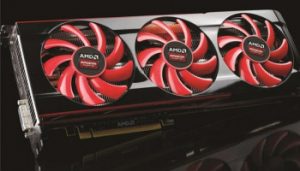What is “future-proofing”?
I want to start things off by defining the term rather than going straight into whether you can or you should be doing it. Future proofing your computer, as far as I am concerned, is simply the act of buying and upgrading your PC parts in anticipation of what the future’s gaming requirements will be. For example, it would be considered future proofed if you bought the best current AMD graphics card (which, in early 2016, happens to be the Sapphire Nitro R9 390) in anticipation of 4K gaming, a display revolution that seems to be where gaming is headed in the coming years.
You can future proof many different components of your desktop, not just your graphics card as mentioned in the example above. Your processor, your RAM, your motherboard, and even your storage space can be future proofed in anticipation for a higher PC demand later on. I would even go as far as saying your PC’s desktop case can be future proofed. The reason for that being that you can buy a larger-than-necessary tower in anticipation of your hardware being more complex than it is at the present.
Should you future proof your PC?
The question itself is quite tough to answer without fully understanding each and every one of your personal budgets, purposes, and future plans for your computers. However, here is what I recommend because it applies to basically everyone:
Buy the best hardware of this generation that you are comfortable with purchasing.
If you were to retain any of the information in this article, it should be the statement above. I have followed this advice with every single PC build I have done, whether it was for myself through the years or building desktops for my friends and family, and it has helped carve a perfect system that fits spending limits as well.
Quite simply, you want the best hardware that is currently out right now. But you also do not want to spend unwisely. So the best advice I can give for those on a budget should be to get what you can afford while not “cheaping” out.
It is also pretty reasonable to go back to last generation’s hardware and see if you can get them for cheap. However, keep in mind this is not future proofing your computer. You are actually going a generation backward, and thus your computer’s performance will only lag behind technology’s trend. That’s not to say it isn’t reasonable to go back and get something cheaper. Compare generations of hardware and see what fits best for you. For instance, we’ve been doing a series of gaming hardware comparisons, such as our popular GTX 970 vs 1060 showdown.
As for future proofing, this usually means you have to step outside your budget a little bit in order to get the very best processor or the best video card or whatever. This is probably so you do not have to upgrade your parts as soon. However, I would not recommend doing this merely because we cannot put a pinpoint on exactly what the future holds. Maybe storage starts getting cheaper more quickly than it has been, and because you proofed your storage, you paid a bit more than you should have on an SSD.
Suggested plan
So if you do not recommend future-proofing some parts, should I be upgrading constantly?
The answer to that is absolutely. I upgrade frequently and, in my own experience, it saves a ton of money. I built my current computer around 6 months ago and have upgraded so often that the original components are not even inside anymore, save for one stick of 8 GB RAM that I have since added on to.

Now, of course you do not have to upgrade that frequently. Even upgrading one time for each computer piece in one year is sufficient. You buy a processor or storage device on Black Friday or whenever it gets on sale, replace your old part, then sell that old part later down the road (or even recycle it by building a friend or family member a new computer using said part; I have done it numerous times and they all have appreciated the work!)
This use, replace, and sell cycle is much more safe in terms of finance than buying the latest CPU, the latest graphics card, the most expensive solid state drive, and then the best monitor all in one go and then never upgrade for a couple of years. Sure, you could definitely still game with that, even years down the line, but you could be paying upward of a thousand dollars just for that system. Plus, as the components get older, the performance starts to decline without reasonable upgrades to your desktop.
In contrast, buying good pieces that you are comfortable with paying for can also get you the gaming performance you need, but then upgrading and selling old parts will also get you some of your money back to keep gaming at a high level. Over the years, the performance of your desktop will remain high because you are consistently feeding it good hardware while recycling the old ones. This, to most, would be a more optimum method of PC maintenance than just purchasing one “future proof computer”.
For more guides like this, visit our home page blog here.














![[How To] Play Call of Duty Modern Warfare 2 Spec Ops LAN Online Using Tunngle How to Play Call of Duty Modern Warfare 2 Spec Ops LAN](https://mysteryblock.com/wp-content/uploads/2013/07/How-to-Modern-Warfare-150x150.jpg)







![[How To] Play Call of Duty Modern Warfare 2 Spec Ops LAN Online Using Tunngle How to Play Call of Duty Modern Warfare 2 Spec Ops LAN](https://mysteryblock.com/wp-content/uploads/2013/07/How-to-Modern-Warfare-100x70.jpg)